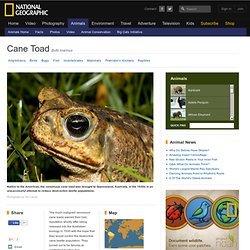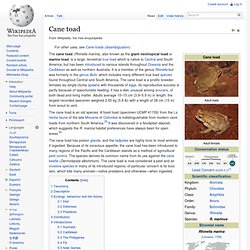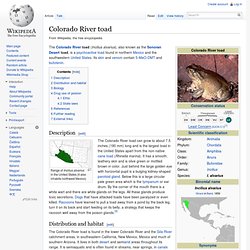

Cane Toads, Cane Toad Pictures, Cane Toad Facts. The much maligned venomous cane toads earned their bad reputation shortly after being released into the Australian ecology in 1935 with the hope that they would control the destructive cane beetle population.

They turned out to be failures at controlling beetles, but remarkably successful at reproducing and spreading themselves. About 3,000 cane toads were released in the sugarcane plantations of north Queensland in 1935. They now number well into the millions, and their still expanding range covers thousands of square miles in northeastern Australia. They are considered pests, and government eradication efforts include asking residents to help collect and dispose of them. Psychoactive Toad Venom Vault. Cane toad. The cane toad has poison glands, and the tadpoles are highly toxic to most animals if ingested.

Because of its voracious appetite, the cane toad has been introduced to many regions of the Pacific and the Caribbean islands as a method of agricultural pest control. The species derives its common name from its use against the cane beetle (Dermolepida albohirtum). The cane toad is now considered a pest and an invasive species in many of its introduced regions; of particular concern is its toxic skin, which kills many animals—native predators and otherwise—when ingested.
Colorado River toad. Description[edit] Range of Incilius alvarius in the United States (it also inhabits northwest Mexico) The Colorado River toad can grow to about 7.5 inches (190 mm) long and is the largest toad in the United States apart from the non-native cane toad (Rhinella marina).

It has a smooth, leathery skin and is olive green or mottled brown in color. Just behind the large golden eye with horizontal pupil is a bulging kidney-shaped parotoid gland. Below this is a large circular pale green area which is the tympanum or ear drum.